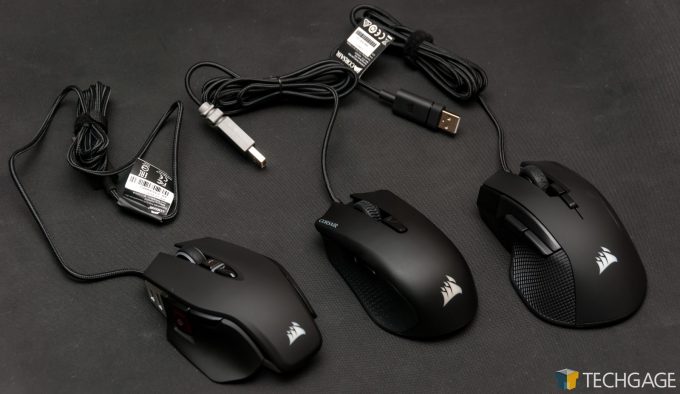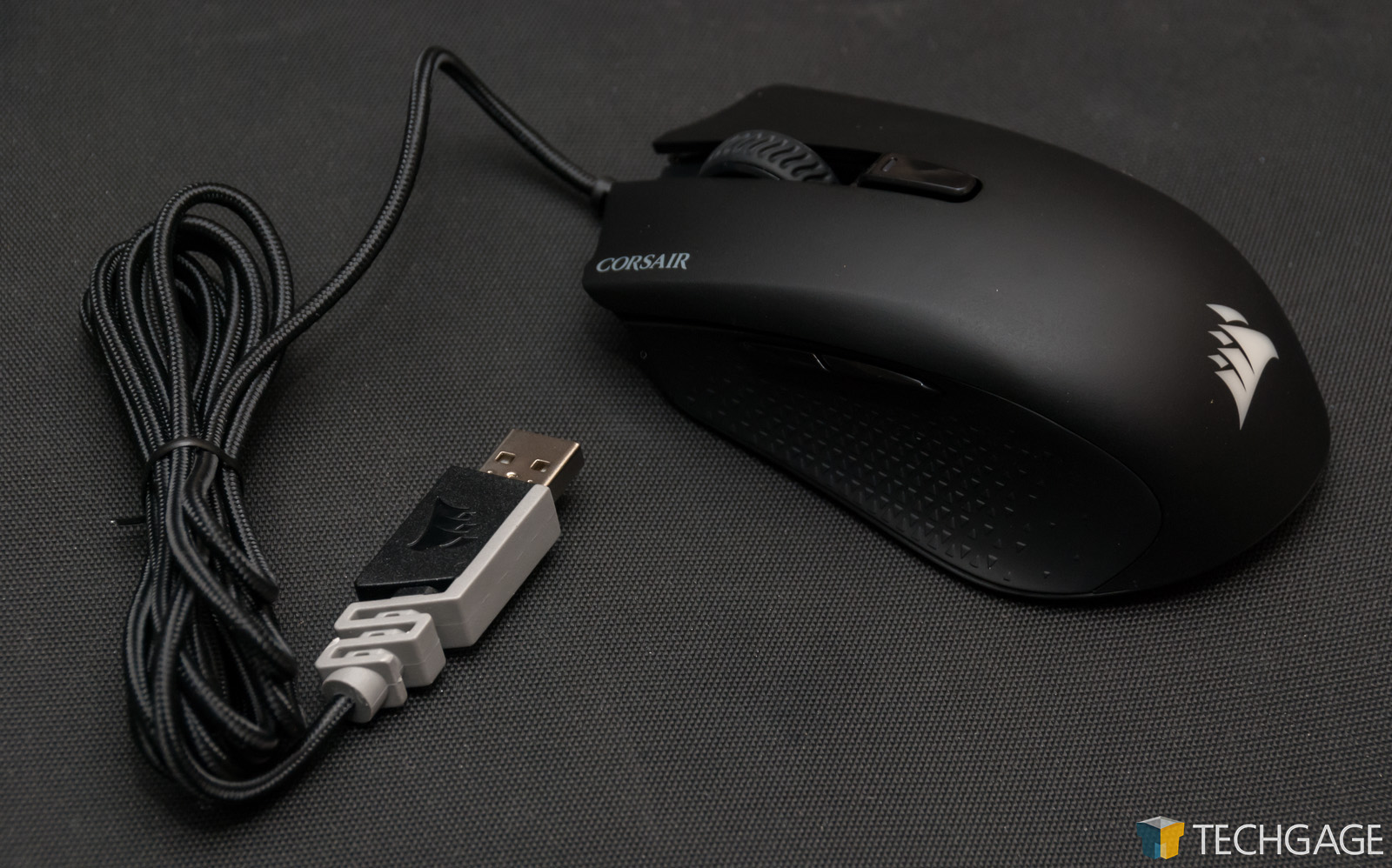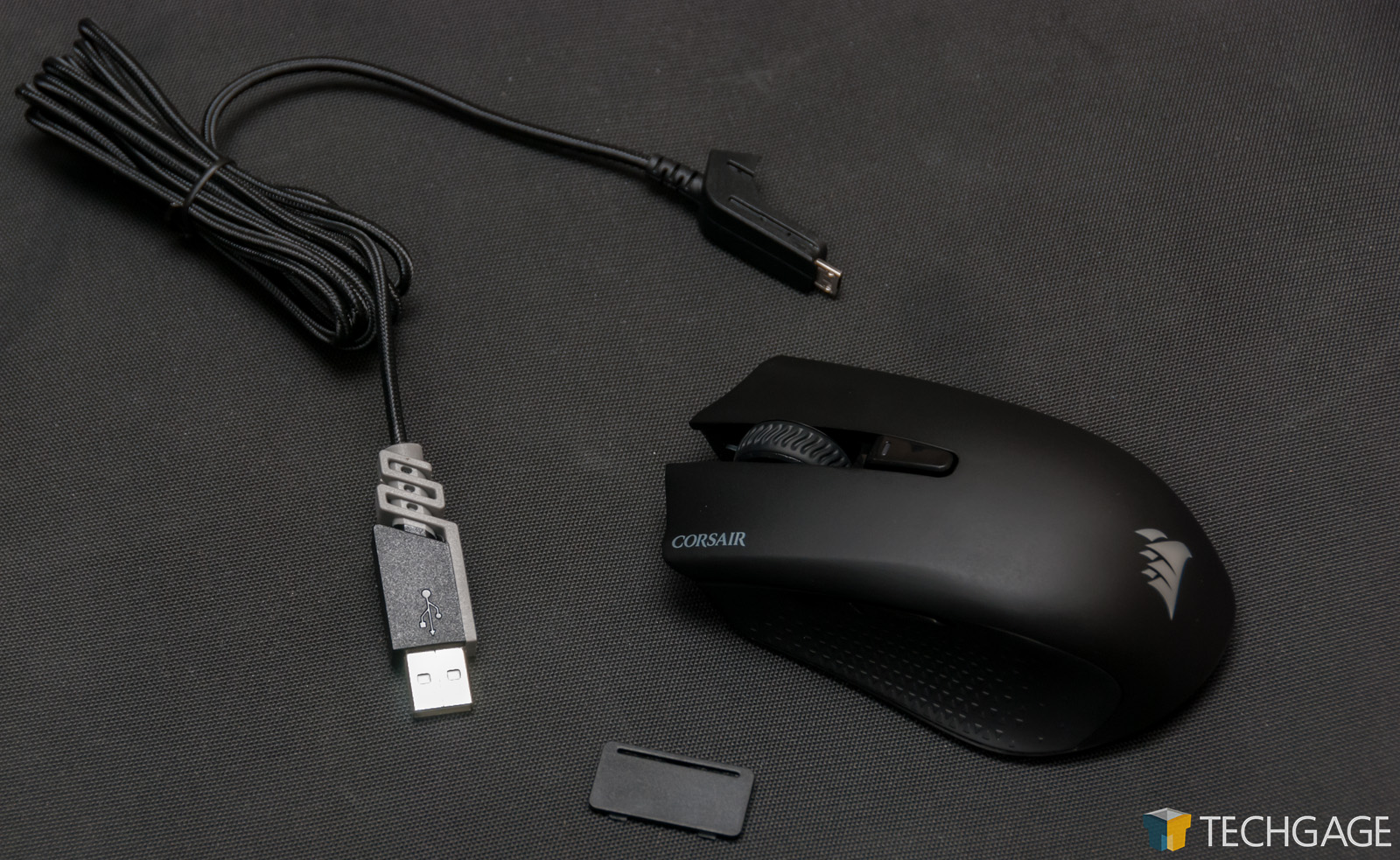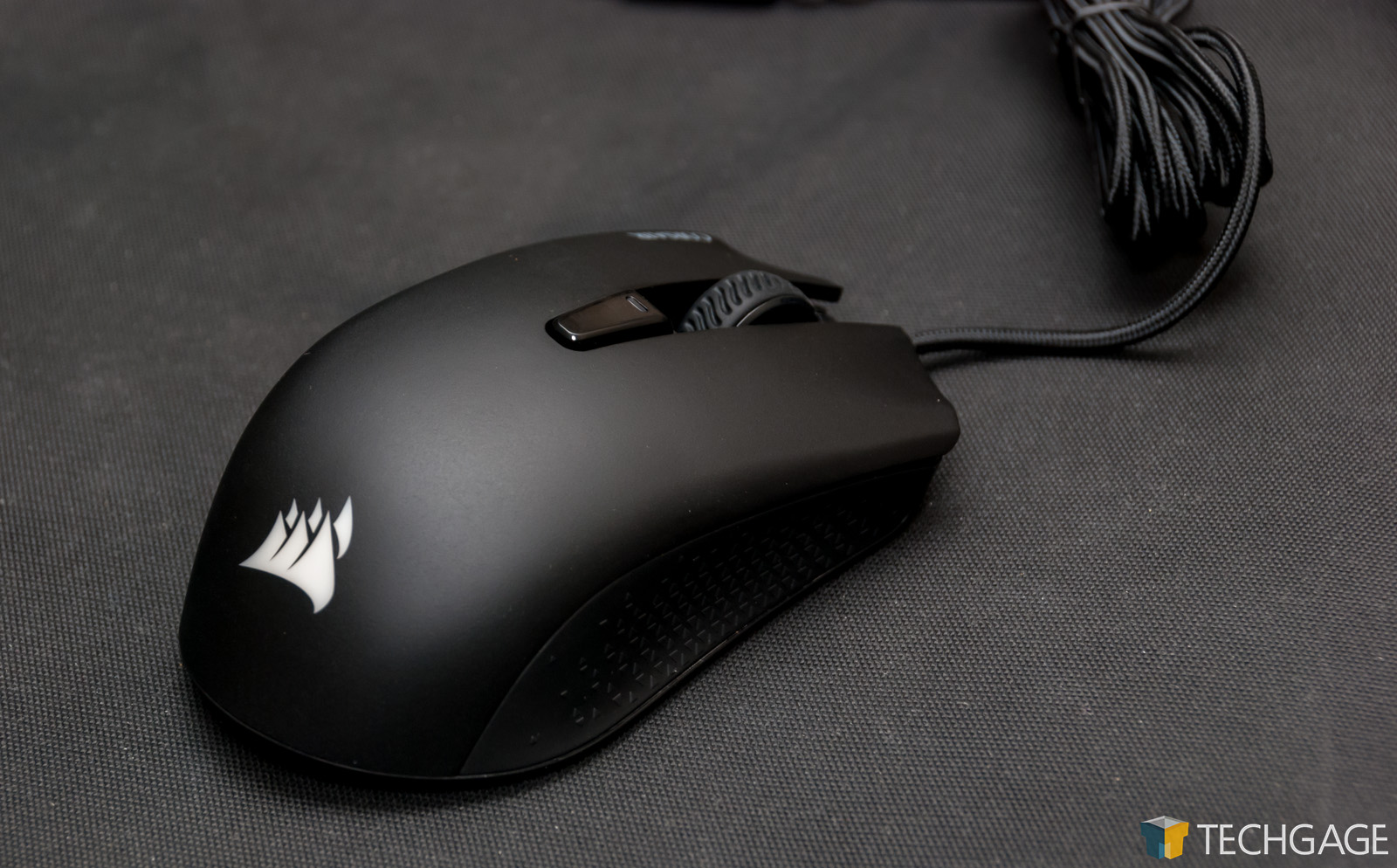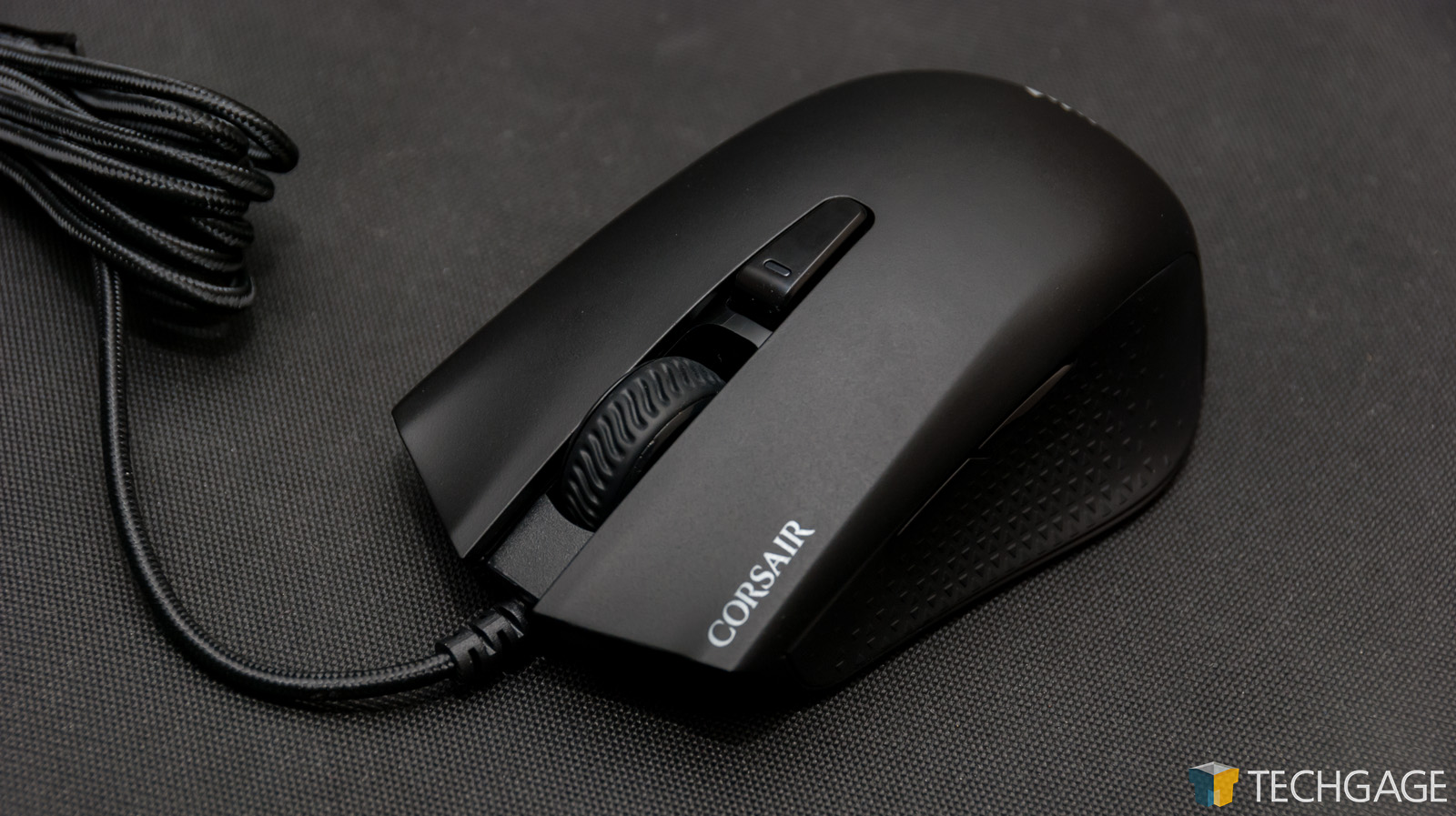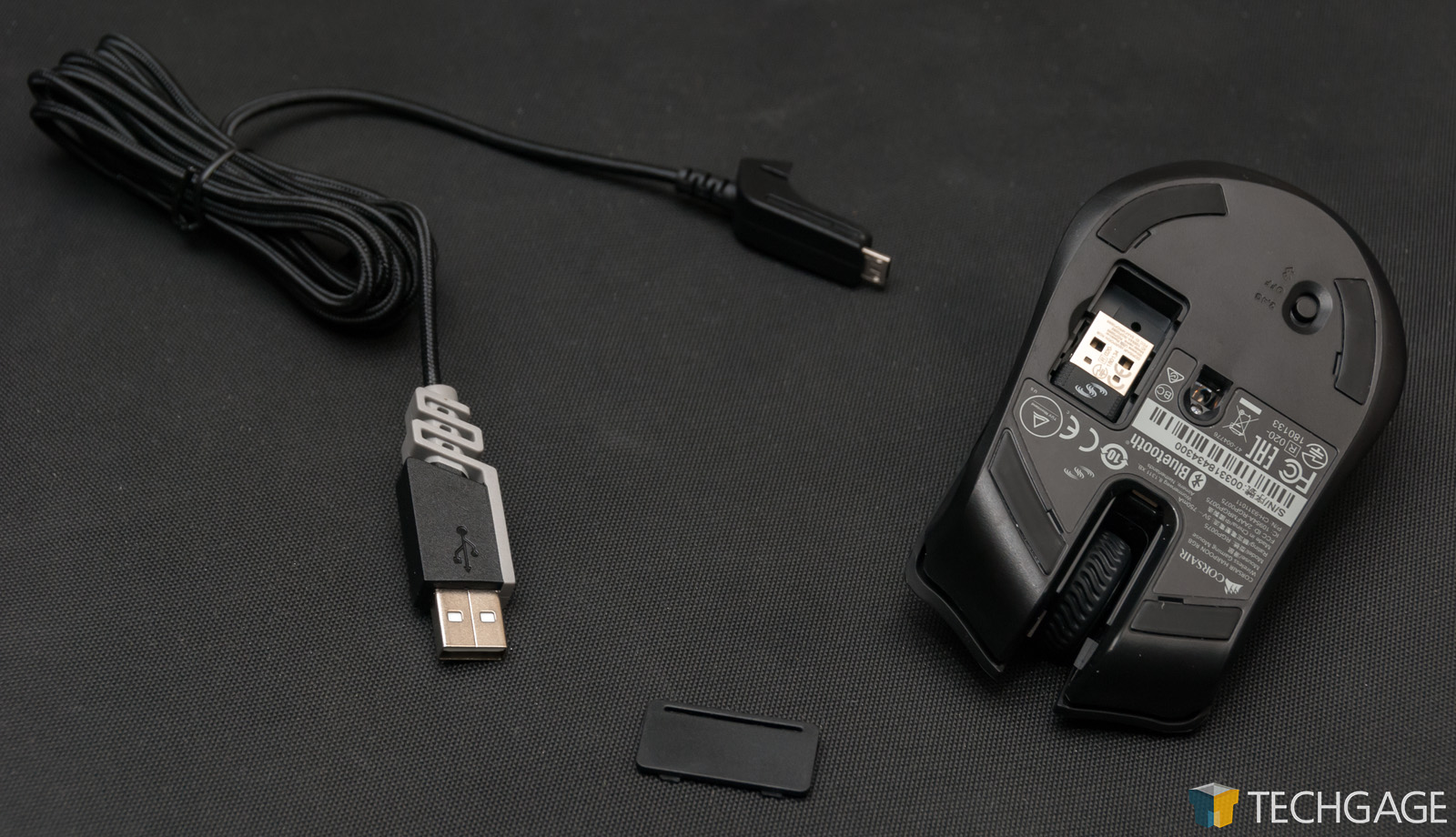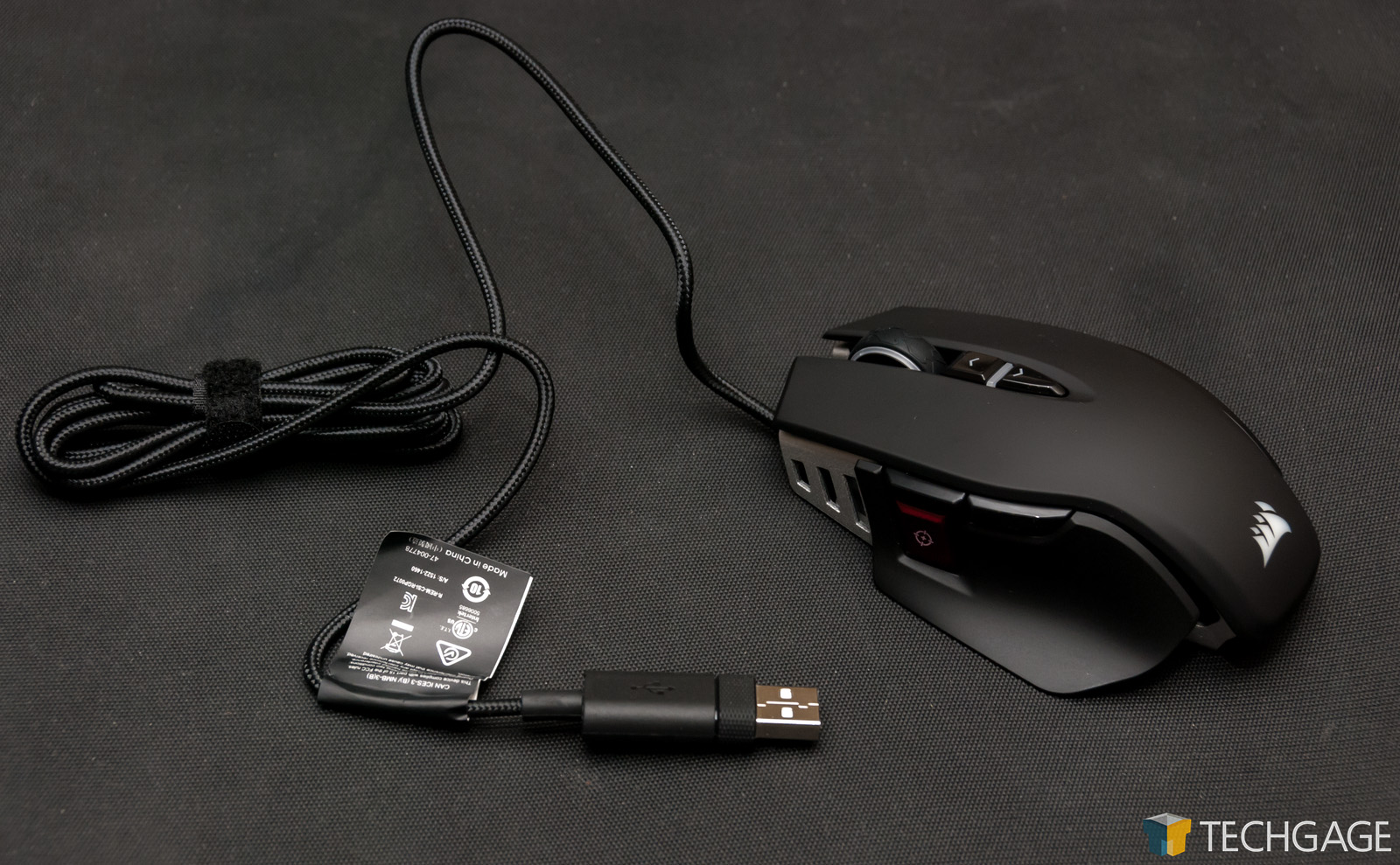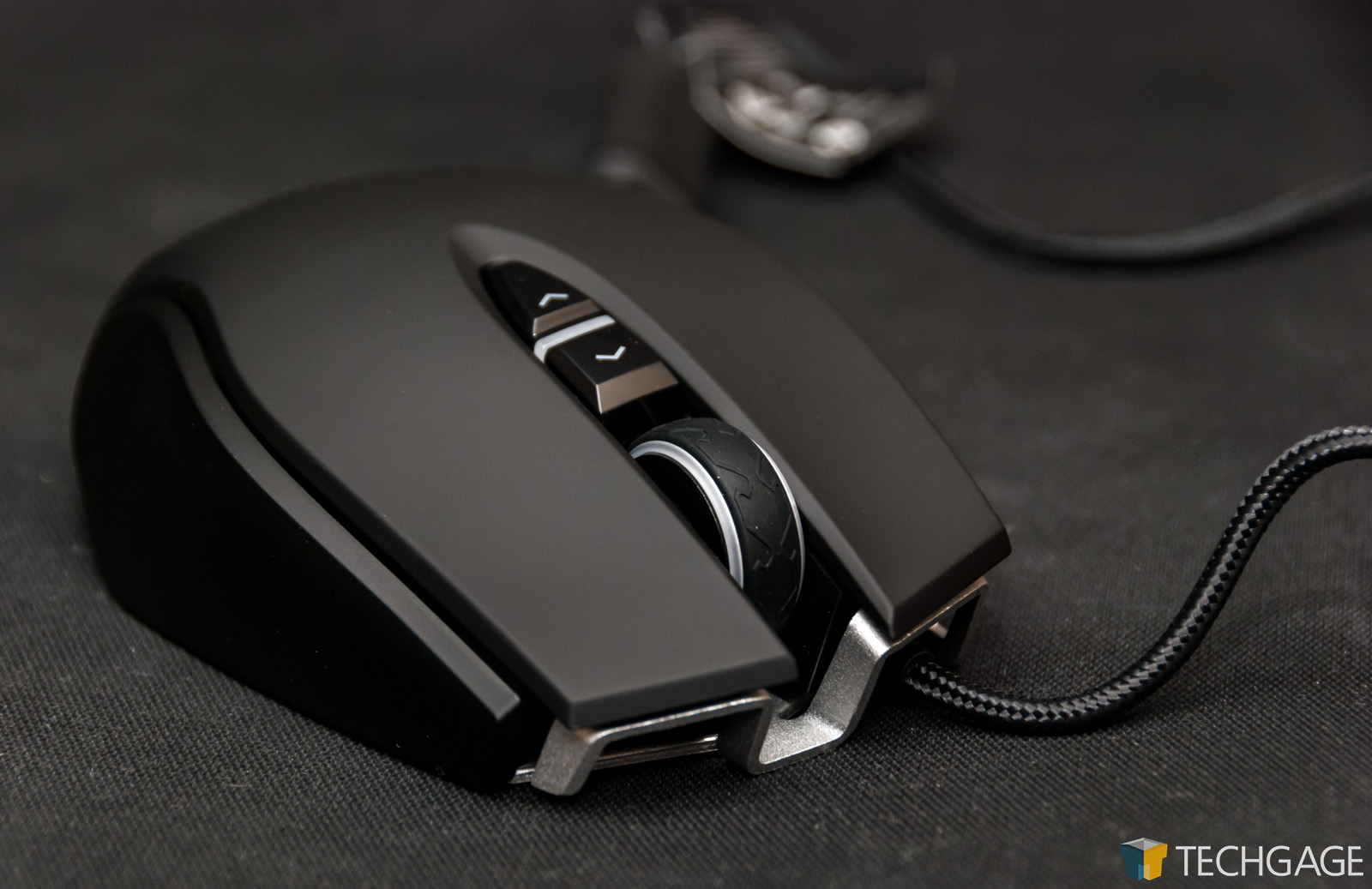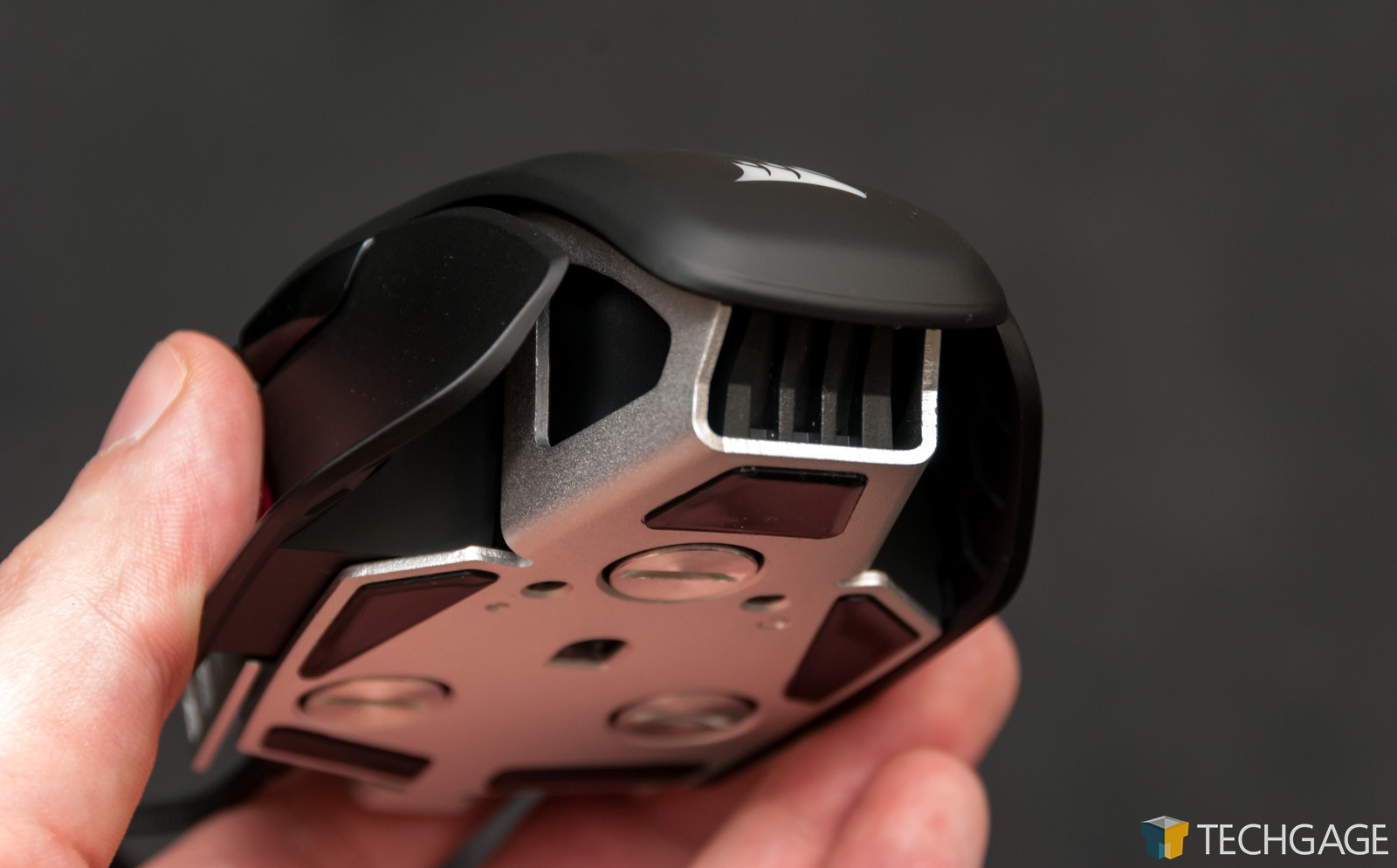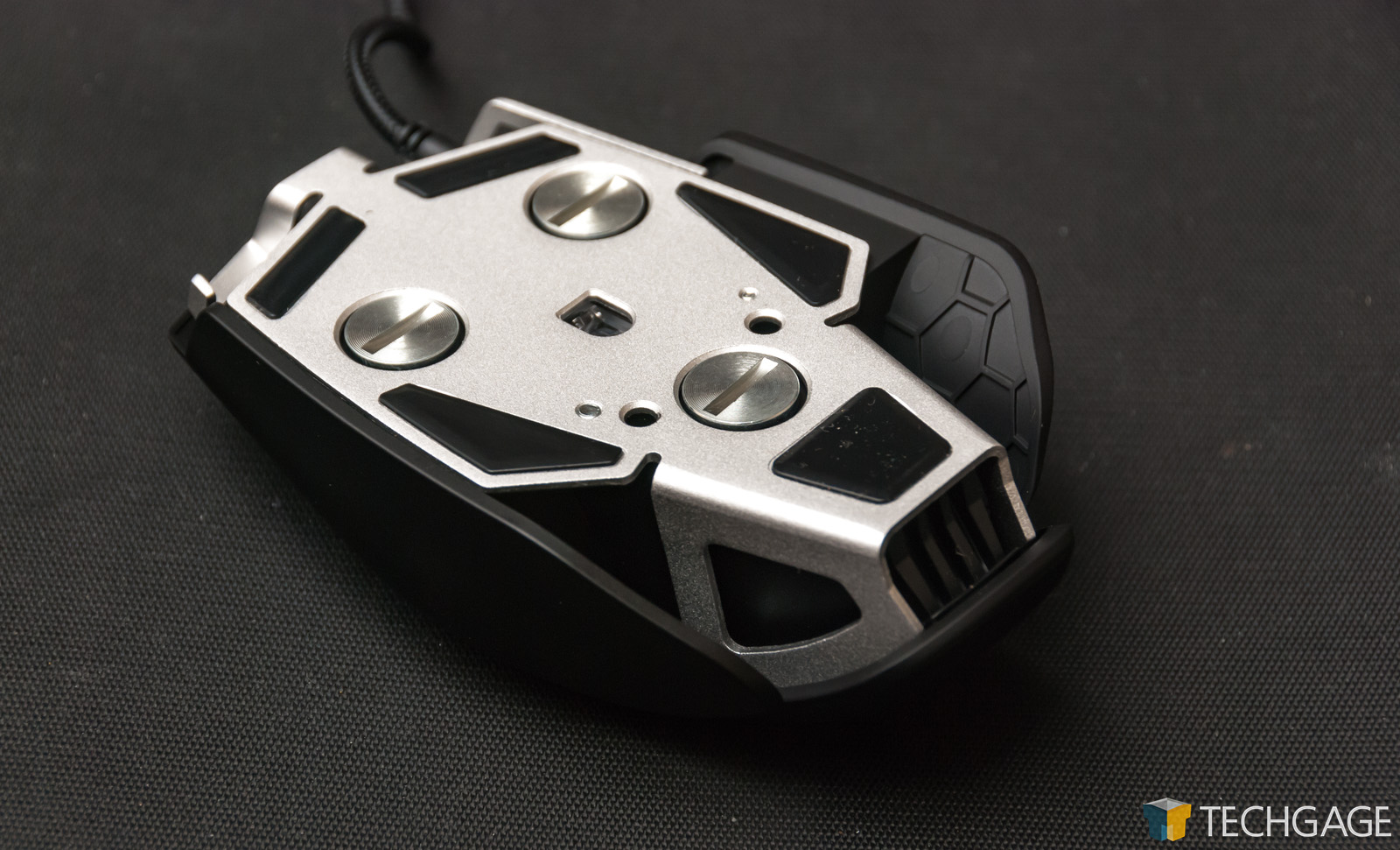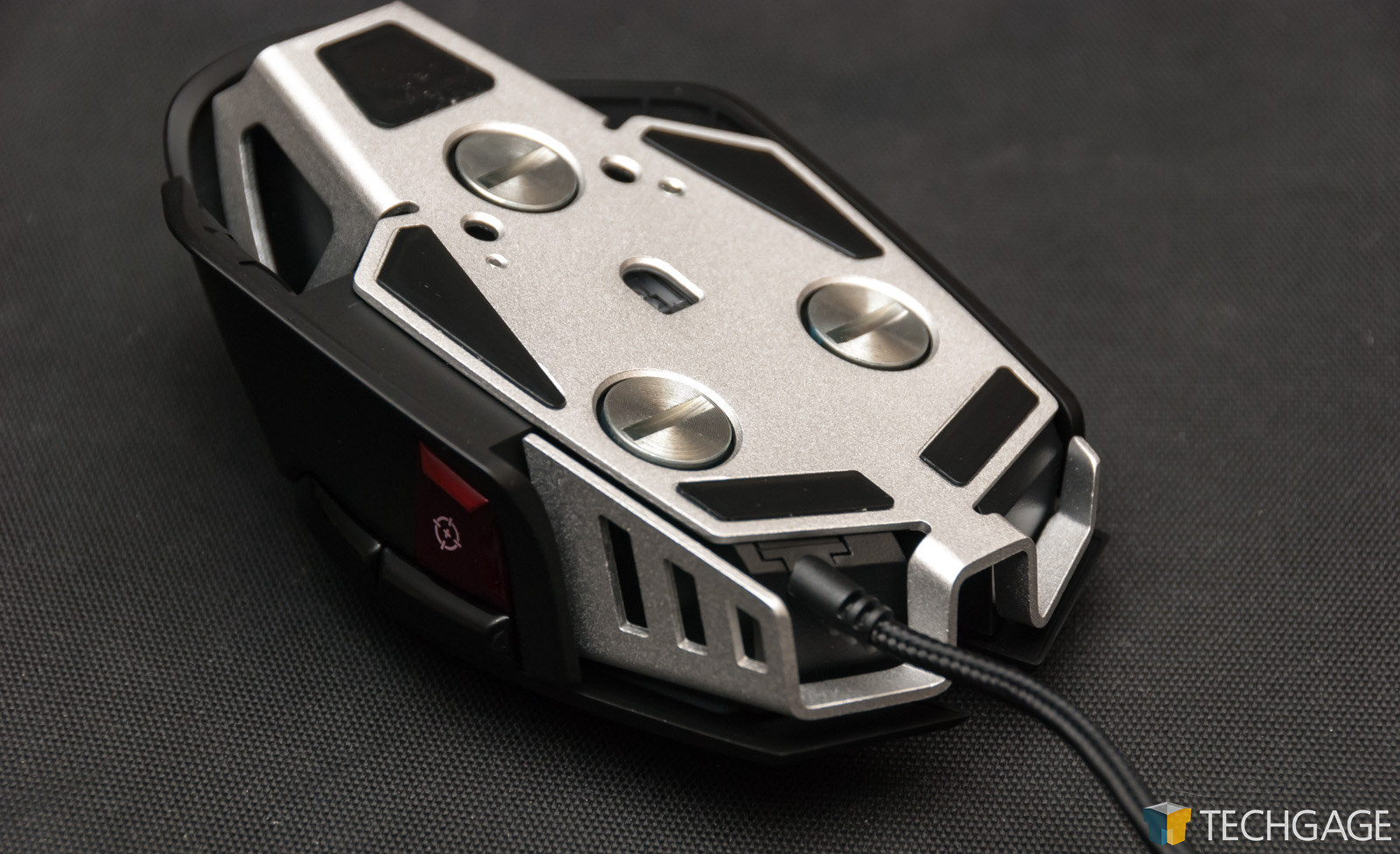- Qualcomm Launches Snapdragon 4 Gen 2 Mobile Platform
- AMD Launches Ryzen PRO 7000 Series Mobile & Desktop Platform
- Intel Launches Sleek Single-Slot Arc Pro A60 Workstation Graphics Card
- NVIDIA Announces Latest Ada Lovelace Additions: GeForce RTX 4060 Ti & RTX 4060
- Maxon Redshift With AMD Radeon GPU Rendering Support Now Available
Corsair Gaming Mouse Roundup: Harpoon, M65 Elite & Ironclaw
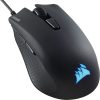
Corsair has three new gaming mice that cater to three types of gamer, and those who like their mouse to cost $60 or less. The $50 Harpoon RGB looks to be a particularly good value with its inclusion of 2.4 GHz and Bluetooth wireless. We’re taking it for a good test drive, along with the M65 RGB Elite and Ironclaw RGB.
Page 1 – Introduction, Harpoon & M65 Elite
Ahead of CES, Corsair announced a trio of gaming mice ranging from $49.99~59.99, and fortunately for those pursuing an upgrade, it’s very likely that one of these rodents will grab you more than the other, as they cater to very different audiences.
Up first is the Harpoon, perhaps the most notable of this trio thanks to its inclusion of Slipstream wireless technology. That allows “sub-1ms” transmissions for what Corsair believes is the fastest gaming on the planet. Of course, you probably won’t notice the difference between 1ms and even 0.5ms, but it’s hard to not be tempted by what’s essentially “the fastest” if you care about such things.
The Harpoon is admittedly a strange choice to launch Slipstream technology with, because at $49.99, the mouse is not a high-end model, yet it’s includes a high-end feature. I’m not too sure why Corsair decided to launch first with this mouse, but the upside is that anyone looking for a solid option at a good price will be treated to the cutting-edge new feature.
Also appearing for review in this article is the M65 RGB Elite, a mouse tuned for FPS gamers, and also Ironclaw, another FPS-bound mouse that also happens to suit MOBAs quite well. We’ll take a look at all three mice here, although none have been used considerably other than the Harpoon, so that might be a good place to start this look off.
Harpoon RGB Wireless
At $50, the Harpoon is a well-priced mouse out-of-the-gate considering it offers both Bluetooth and 2.4 GHz wireless, but making it even cooler is the new Slipstream technology, which Corsair claims will deliver the most precise control. It’s really hard to test the effects and gains of such a claim, because it’s not as though shaving even 10ms off of your mouse input is going to be noticeable for most people. Those who opt for Slipstream care a lot about input latencies, and are almost certainly competitive players.
I admittedly wish the Harpoon was not the first Slipstream mouse, but it’s only because its design isn’t one that suits me, personally. It’s not a very large mouse, though it’s larger than a notebook mouse. It’s somewhere in between, which means it’s very light. That can be a good or bad thing depending on your tastes. For me, the small size is more of a problem than the weight, but this is again why it’s good to have choice. There’s no one-size-fits-all in most markets, and the peripherals market is certainly included in that.
The fact that the mouse offers Bluetooth as well as 2.4 GHz is a great feature, as it allows you to keep multiple profiles in case you want to use the same mouse for your notebook or mobile device. I tested the mouse on both a notebook, and for fun, my phone, and it worked flawlessly in all of my use (very minimal on the phone, but a lot on the notebook.)
As it’s a wireless mouse, your use of the Harpoon will eat away at its battery as you do your thing, but the rated lifespan per charge is more than acceptable: 30 hours with standard lighting, or 45 hours with lighting off. Should you be using the Bluetooth mode, that battery-life boosts to 40 and 60 hours, respectively.
As with all of Corsair’s peripherals, the Harpoon supports the company’s robust iCUE software, allowing you to create macros, adjust the RGB lighting, and edit DPIs to your heart’s content (including a sniper button, if you want to set one up).
One thing the Harpoon’s PMW3325 sensor can’t do is go beyond 10,000 DPI, and while that sounds unlikely to be a limitation for many, the M65 RGB Elite and Ironclaw RGB both support up to 18,000 – so bear that in mind should you need such high sensitivity.
M65 RGB Elite
The Harpoon stands out amongst this trio for the fact that it includes Corsair’s Slipstream wireless tech, but the M65 RGB Elite is arguably the most feature packed of the bunch. It’s not wireless, and it has no apologies for that. It’s a mouse designed for those who take their gaming seriously, with FPSes in particular being in Corsair’s target.
The reason for the laser focus on FPS is thanks to the inclusion of a “Sniper” button, nestled underneath the right and back buttons. When pressed, the preset DPI value will activate, allowing you to slow your aim, and thus improve your shot.
When you’re in the type of situation where you need to hit (and hold) a sniper button, it may mean that slow reactions will result in death. To minimize delay in using the sniper button on this mouse, Corsair placed it right inside of the thumb rest, so that your thumb is always right on top of it.
Despite the placement of this sniper button, it isn’t easy to push by accident, but you may disagree if you happen to grip your mouse during intense gameplay. Because this button does protrude from the thumb rest, you’ll want to avoid this mouse if you’re not going to use the button, else it’s probably going to feel like it’s in the way.
That being said, there could be other (even non-gaming) uses for a sniper button. Since the iCUE software allows you to map this button as you can any other, the sky is the limit.
The M65 RGB Elite shares the same sensor of the Ironclaw, giving us 18,000 DPI. It improves on both mice here by bumping the RGB zone count from 1 to 2, which includes the wheel up front, and Corsair logo at the back. These zones can of course be independently configured in the iCUE software.
Support our efforts! With ad revenue at an all-time low for written websites, we're relying more than ever on reader support to help us continue putting so much effort into this type of content. You can support us by becoming a Patron, or by using our Amazon shopping affiliate links listed through our articles. Thanks for your support!




